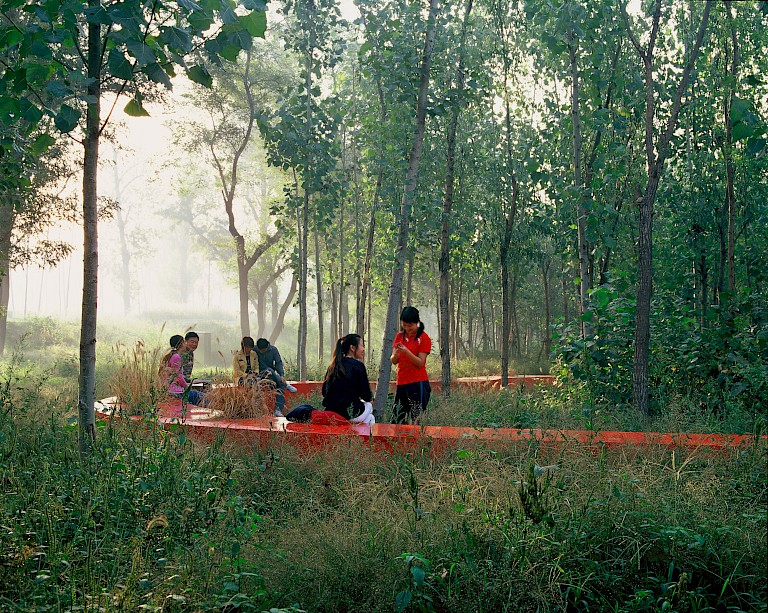



Based on the environmental conditions and in the context of the functional needs of the urban community, the first design priority at Tanghe Park was to protect the basic conditions of the water and vegetation. This meant strict protection of existing wetlands and strict protection of existing vegetation. Further measures called for the creation of biological berms in order to maintain the shape of the river and prevent its gradual erosion. The berms themselves were made from native species, both aquatic and wetland plants. Second, a continuous bicycle and pedestrian system was established. Bike paths and walking trails were created along the riverbank, connected with a road system making the area more accessible and secure. Third, an integrated seating, lighting and botanical viewing installation was created; called the Red Ribbon in the Green Forest, it weaves through the landscape along the forest line of the east riverbank.
Red Ribbon is more than 500 meters long, composed of a fiberglass reinforced hollow cube of varying width. The shape and dimensions of the ribbon change to reflect the terrain as it winds through the trees. It has five nodes corresponding to five ecological zones and includes explanatory signs and plant identifiers. Each node has one "cloud" where there is an enclosed seating area and cover, providing protection from both sun and rain. One of the zones features a planting activity, where native plant species including Pennisetym, Andropogon, Lard Mans, Phragmites Australis, Imperata and others can be distributed. Because only native plant species and indigenous resources are used there is minimal required grounds maintenance, consistent with low-carbon design and the park's aesthetic of balance.
At night the ribbon provides an enchanting spot for stargazing, the night sky reflected in its surface. Overall, the effect is of a designed landscape that conveys respect for the river and plant life, while suggesting the interface between city and nature, the man-made and the biological, history and modernity.
All copyright belongs to Shanghai Academy of Fine Arts, Shanghai University.



